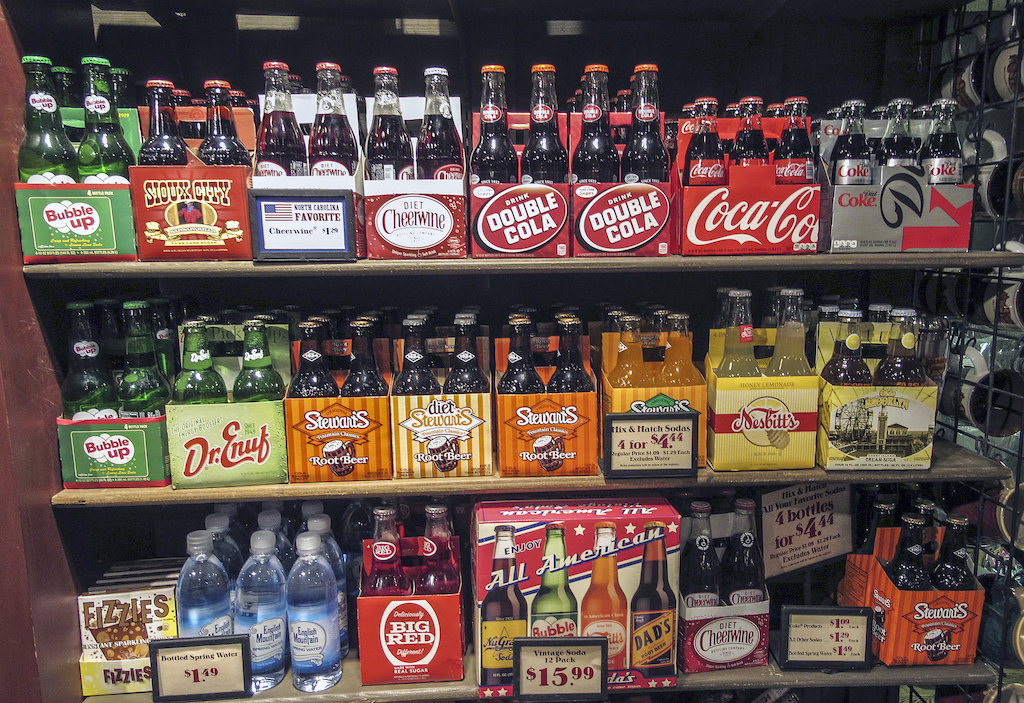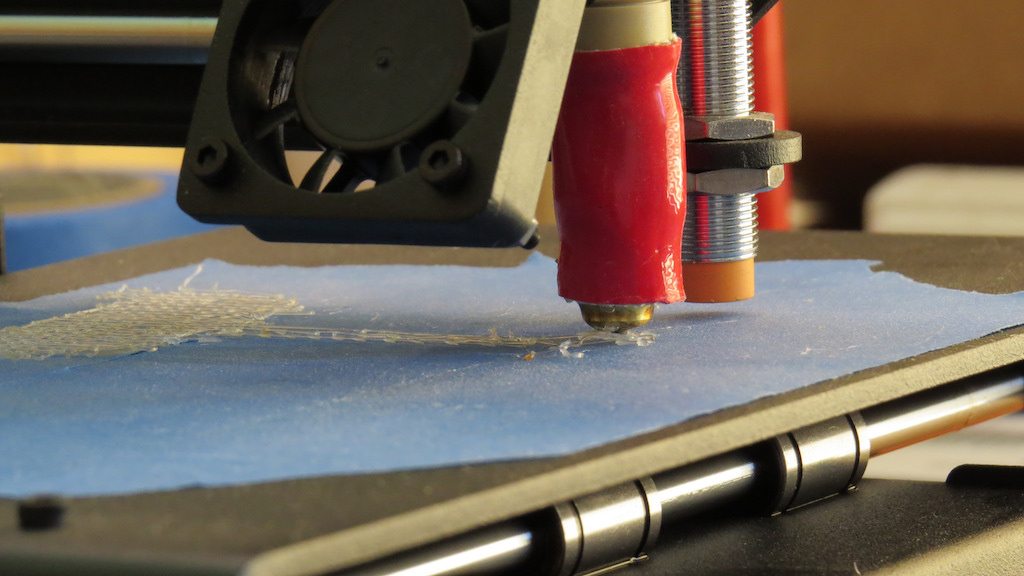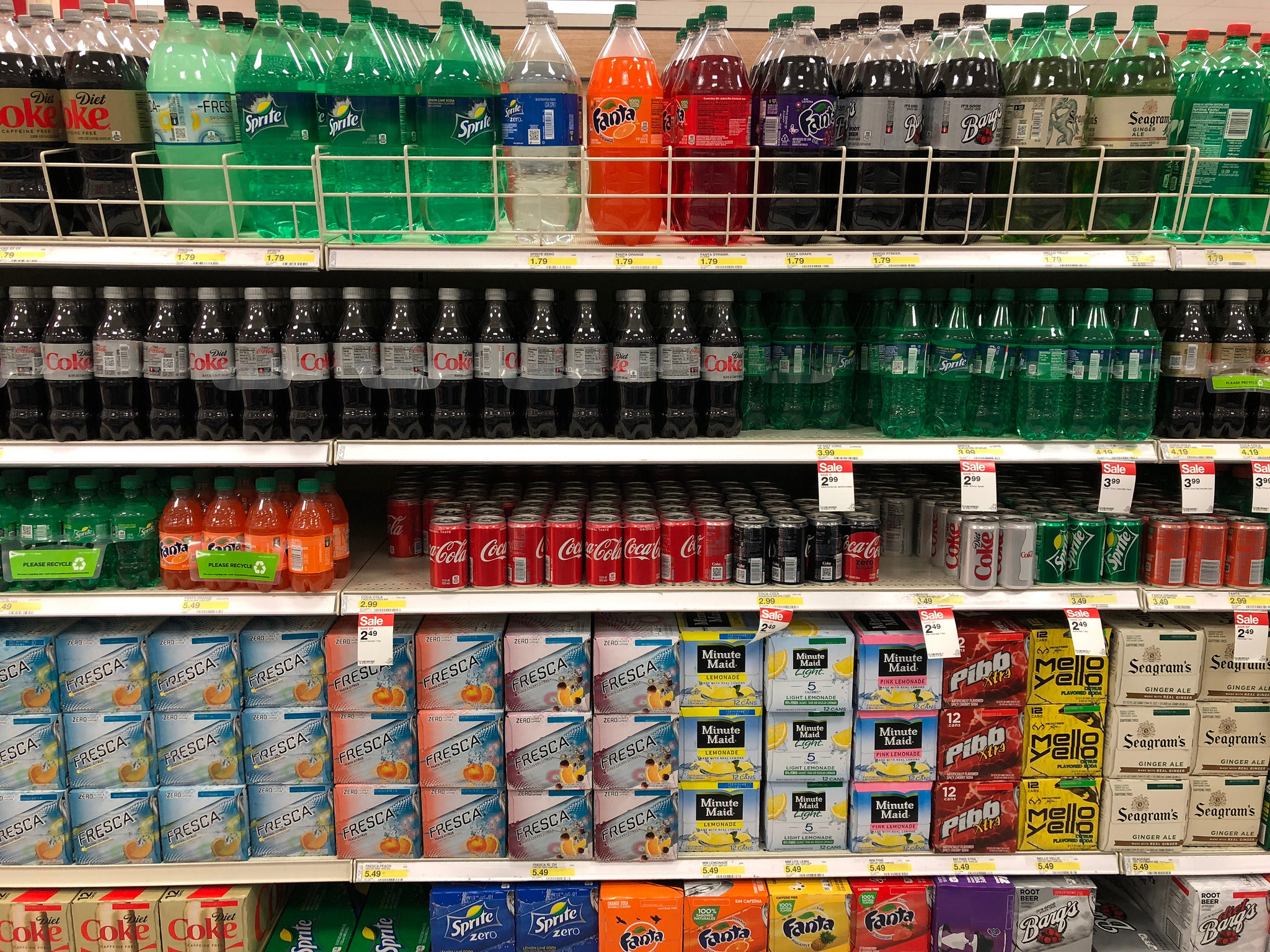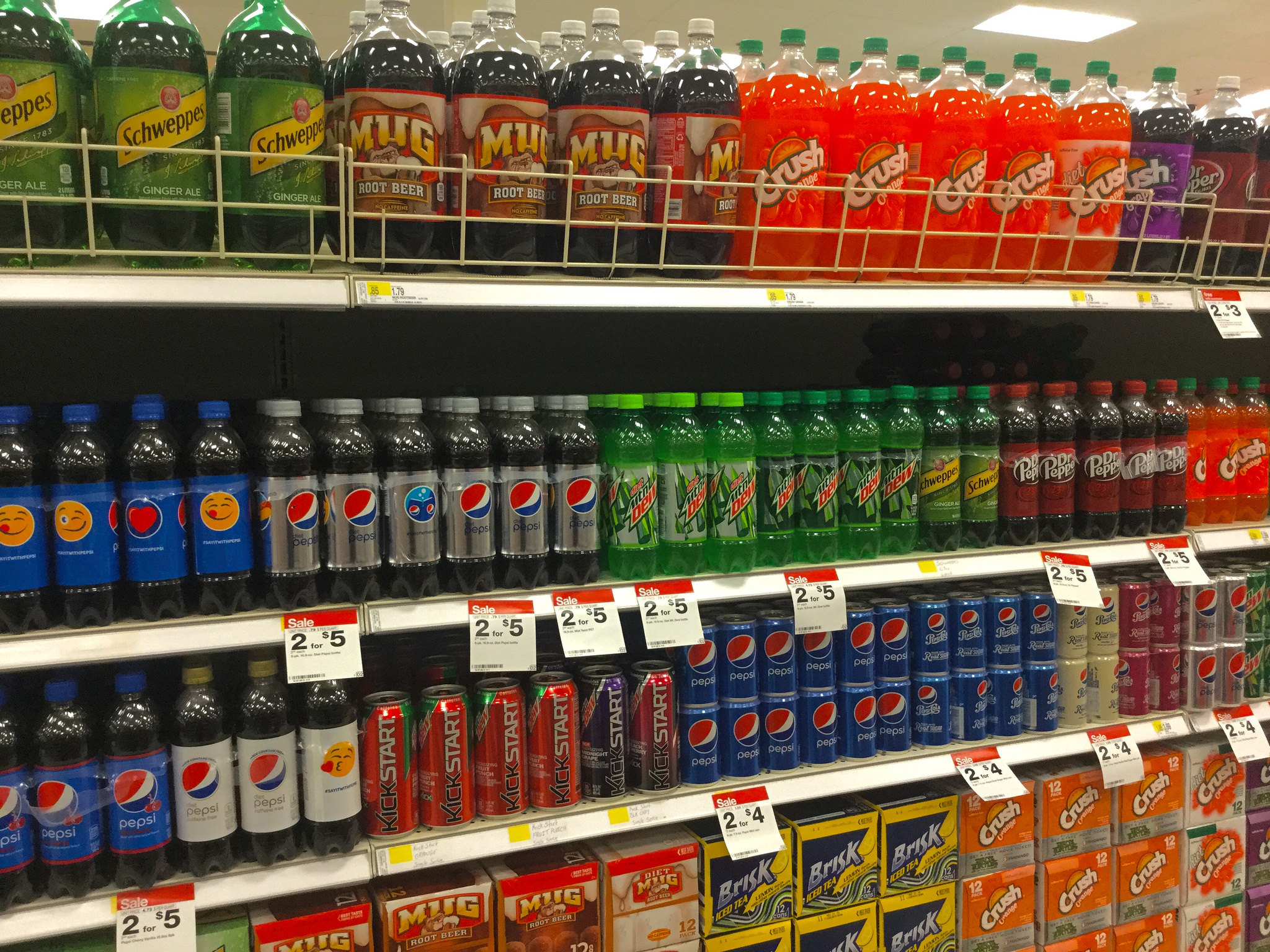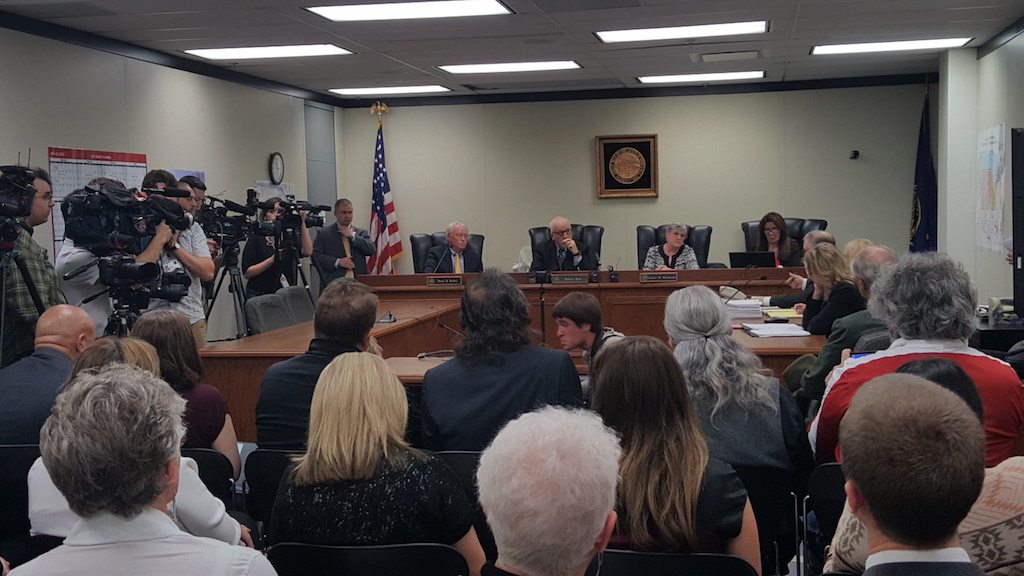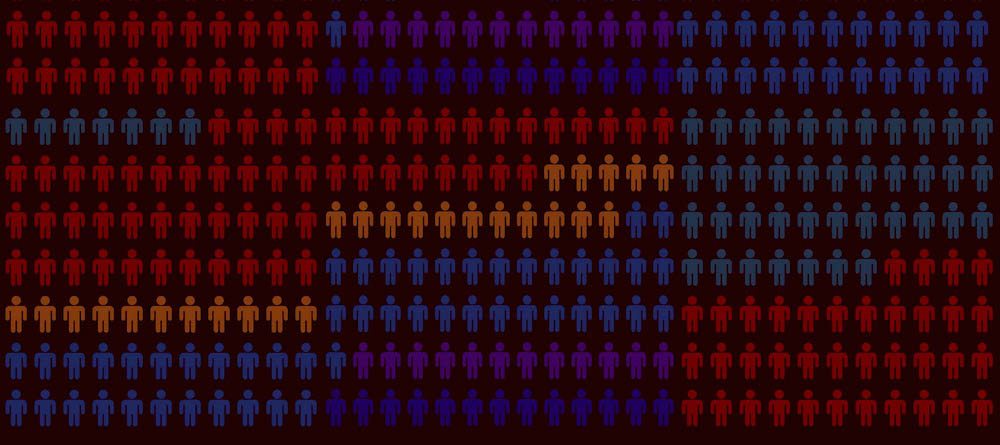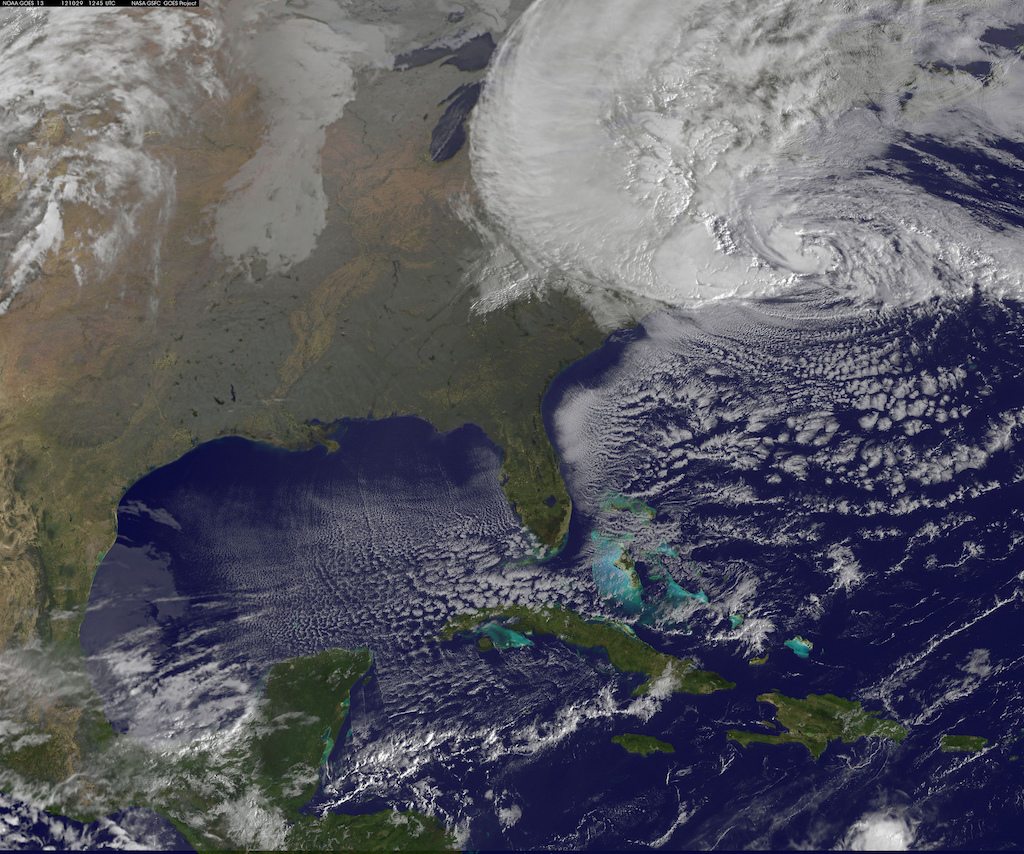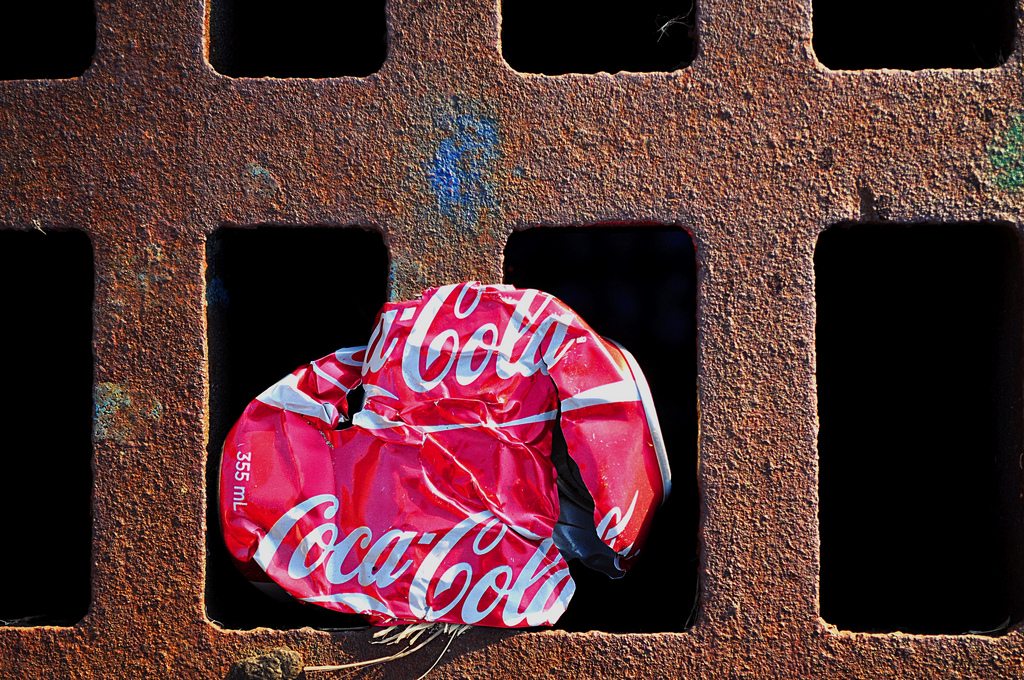Most people spend a little extra money on payday. In Iceland, for instance, half the population spends 25 percent more than usual on the day paychecks are issued. This isn’t lost on grocery stores, unsurprisingly, which commonly raise prices when people have more spending money. But new research reveals an overlooked method retailers use to capture more of that first-of-the-month paycheck: by ramping up soda marketing, especially to low-income shoppers.
A new study in the American Journal of Preventive Medicine indicates that retailers are more likely to market soda during the days of the month when people receive money from the Supplemental Nutrition Assistance Program (SNAP, or food stamps). The research, which focuses on three cities in upstate New York, shows that stores in census tracts with high SNAP enrollment are more than four times more likely to advertise or display sugary drinks during the days SNAP payments are disbursed.
“Retailers have a tremendous incentive to heavily market popular items during this time period when they know people are going to be spending their benefits. It’s a way to get shoppers into their store,” says Alyssa Moran, current assistant professor of health and social policy at Johns Hopkins’ Bloomberg School of Public Health, who conducted the research as a doctoral student at Harvard’s School of Public Health.
Moran says she had heard from retailers that they ramped up marketing of items like soda that they thought SNAP customers would buy during issuance periods, and she wanted to figure out whether those anecdotes would hold up in a statistical analysis.
To answer that question, her team analyzed data collected in 2011 for a separate study by the New York State Department of Health. Researchers visited hundreds of stores in Albany, Syracuse, and Buffalo and noted whether they were promoting sugary beverages through displays at the register, at the end-of-aisle displays, or through price promotions. They collected information on both sweetened and unsweetened drinks.
Moran’s team found that stores are 1.9 times as likely to display sugary drinks prominently are on SNAP issuance days as compared to the rest of the month, and the prevalence of soda advertisements was one 1.7 times the average volume during benefit disbursement. When the researchers accounted for income level, the results were even more stark. While higher-income communities saw no change in soda marketing across the month, communities with high levels of SNAP reliance—at least 28 percent enrollment—were 4.35 times as likely to put up soda displays during the days where people received their SNAP benefits. “That really gave us confidence that stores were responding to the SNAP benefit issuance cycle rather than other changes,” Moran explains.
While the national debate over SNAP and soda rages on with no end in sight, Moran says state governments can use these findings to modify their own policies to impact public health. If states decided to distribute SNAP benefits evenly throughout the entire month, retailers might not be incentivized to advertise soda to people using food stamps during any particular week. Some advocates have also championed a system that involves requiring grocery stores that accept food stamps to implement “choice architecture,” which would mean displaying healthy foods in easy-to-spot locations and limiting the number of candy bars at the checkout line.
The study’s findings don’t differentiate between small family groceries and supermarkets, so it’s impossible to know whether the SNAP-day sales pushes are orchestrated primarily by individual retailers or by soda companies rolling out statewide promotions. Either way, the result is the same: People using food stamps are encouraged to buy soda as soon as they’ve got money in their pockets.
Correction June 5, 2018: This story has been updated to more accurately represent the likelihood of stores marketing soda on SNAP issuance days. Whereas we originally reported that stores are 1.9 times more likely to display sugary drinks, they are in fact 1.9 times as likely.
